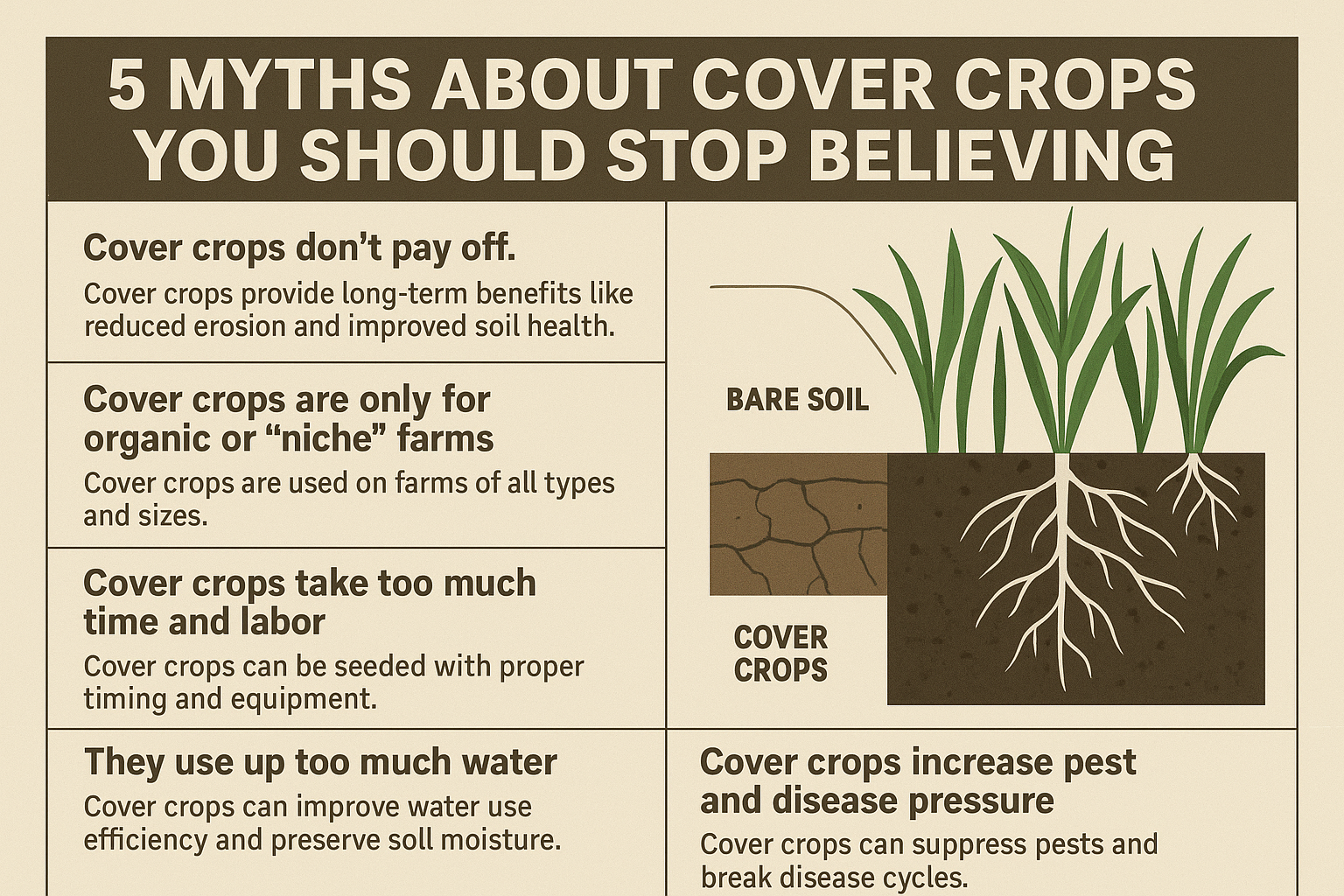
Cover crops are gaining traction as one of the smartest tools in the sustainable farming toolbox. Yet, despite their many benefits, myths and misconceptions still keep some growers from giving them a try. Whether you’re a seasoned farmer, a student of agriculture, or someone shaping farm policy, it’s time to set the record straight.
Here are five common myths about cover crops — and the truth behind them.
Myth 1: Cover crops don’t pay off.
Truth: While cover crops don’t provide a direct harvest, their return on investment shows up in other ways, like reduced erosion, better soil structure, higher organic matter, and lower input costs over time. Many farmers report improved yields in subsequent cash crops (but recent research does not show improved yield), not to mention long-term savings on fertilizer and irrigation.
Myth 2: Cover crops are only for organic or “niche” farms.
Truth: Cover crops aren’t just for small farms or those marketing organic produce. They’re now used on conventional and large-scale farms across the U.S. for soil conservation and water retention. In semi-arid regions like the Southern Great Plains, they also help protect against wind erosion and improve water infiltration.
Myth 3: Cover crops take too much time and labor.
Truth: Like any new practice, cover cropping requires planning — but it doesn’t necessarily mean more work. With proper timing and equipment, many farmers successfully seed cover crops right after harvest or even interseed into a standing crop. And once the system is in place, it can become part of your regular management calendar.
Myth 4: They use up too much water.
Truth: This is a concern in drier regions, but research shows that cover crops can actually improve water use efficiency by increasing soil organic matter and reducing evaporation. Some species are especially suited to dryland conditions and can be managed to terminate early, preserving soil moisture for the cash crop.
Myth 5: Cover crops increase pest and disease pressure.
Truth: The right cover crop, managed properly, can break pest and disease cycles rather than worsen them. For instance, brassicas can suppress soilborne pathogens, and legumes can host beneficial insects. The key is diversity and rotation, not repeating the same species season after season.
Why This Matters
Cover crops play a vital role in building soil resilience, reducing input dependency, and even mitigating climate impacts through carbon sequestration. Dispelling these myths is a step toward wider adoption — and a healthier, more sustainable farming future. Whether you’re advising growers, investing in ag innovation, or farming your own land, understanding the true value of cover crops is key to long-term success.
Acknowledgment
This article is part of a project funded by the Western Sustainable Agriculture Research and Education (SARE) Program, under project number GW25-003.



